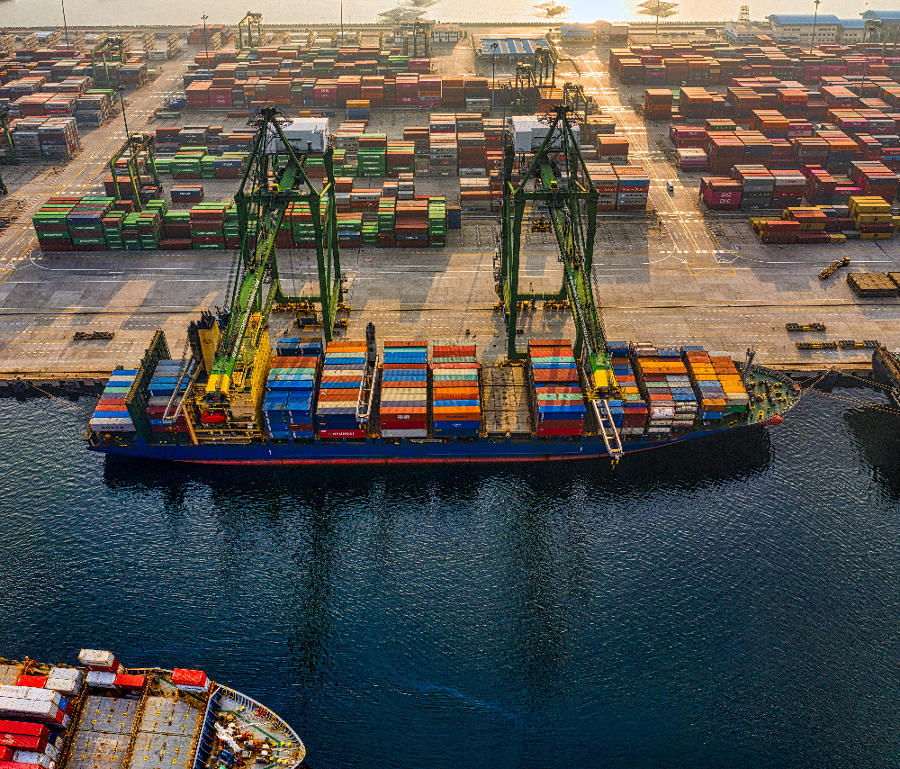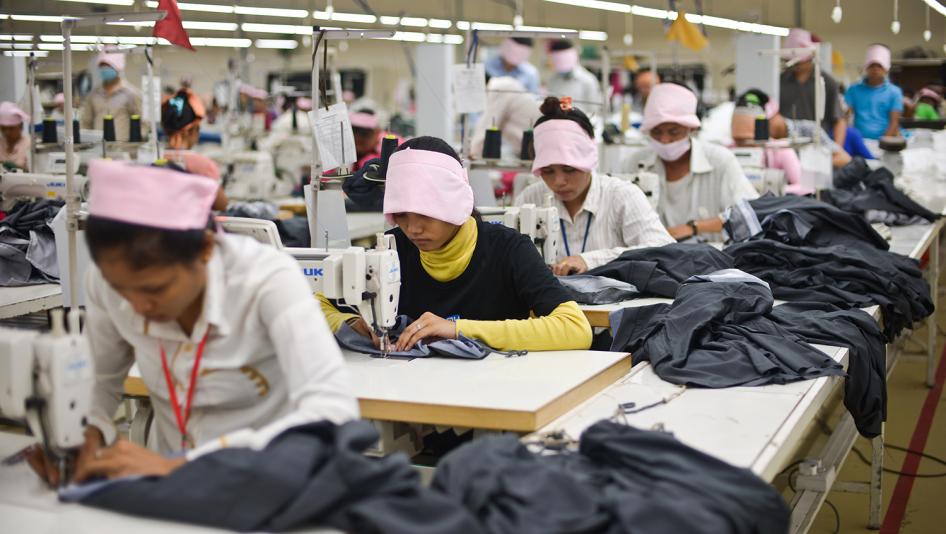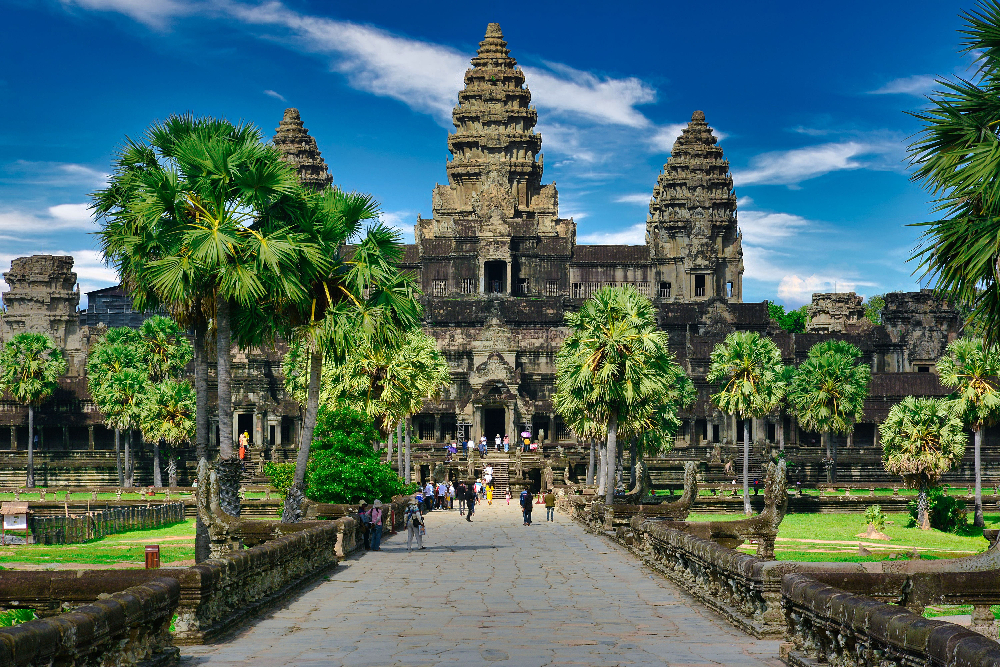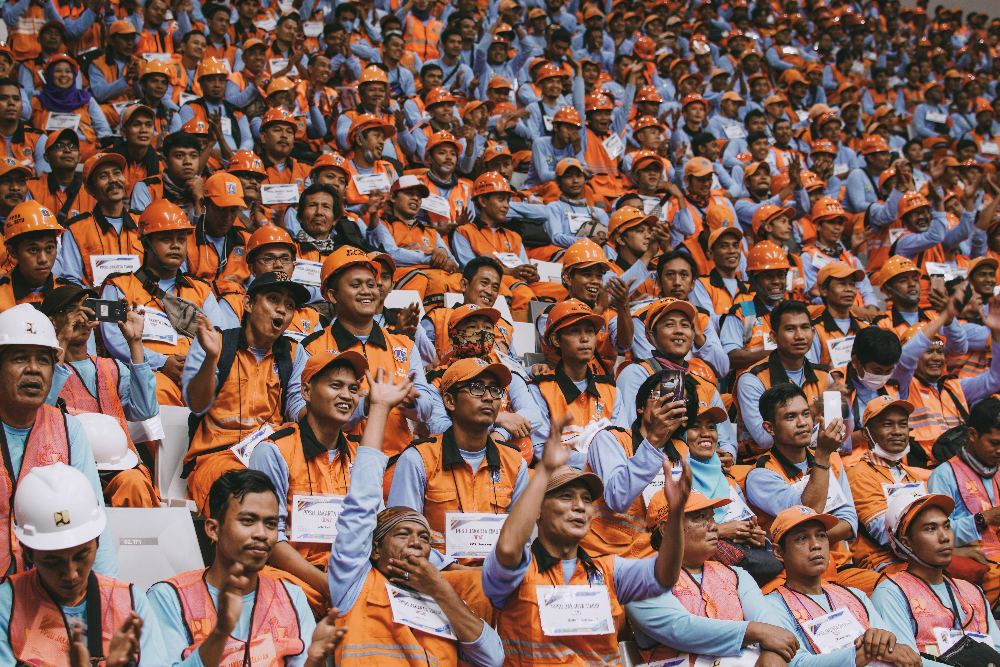CAMBODIA
OVERVIEW OF THE CAMBODIAN ECONOMY
A country of almost 17 million inhabitants, Cambodia has enjoyed sustained growth for over twenty years (an average of more than 7% since 2000). While almost 75% of the population is still rural, urbanisation is well under way and agriculture now accounts for less than a quarter of GDP. Traditionally driven by services (tourism and finance), textiles and construction, while the share of agriculture is declining, GDP is set to grow by 5.6% in 2023, to nearly USD 30 billion. It is expected to grow by 6% in 2024, the second fastest in ASEAN and one of the fastest in the world.
As a member of ASEAN, the WTO, RCEP and the ASEAN Economic Community (AEC), Cambodia has benefited from the region's dynamism. This has taken the form of an influx of foreign investment, mainly from Asia (China, Japan, Korea, etc.). A very open trading country, its foreign trade is in deficit and asymmetrical, with the bulk of Cambodia's imports coming from Asia - especially China - while almost two-thirds of its exports are destined for the European and American markets. Cambodia still benefits from strong support from multilateral and bilateral donors (more than one billion dollars in grants and concessional loans per year, including 200 million from AFD), as well as commercial advantages (privileged access to European and American markets).
After the health crisis, bilateral trade has resumed, even if the international context is not favourable. Despite everything, French exports rose by 31% in 2023 (to €171m) and should continue to grow in 2024. Imports are down slightly to €1.2bn, and remain concentrated on textiles and agri-food products. In terms of FDI, France is present in most sectors of the Cambodian economy, but particularly in energy, infrastructure (transport, public works) and tourism.
In addition to the subsidiaries of major groups, the existence of a dynamic network of French companies abroad (over 400) explains these investments and the French presence. For over a year now, bilateral relations have been revitalised with visits from Prime Minister Hun Sen (December 2022), the King (November 2023) and the new Prime Minister HUN Manet (January 2024). The new government, appointed in August 2023, is very pro-active and specifically encourages French companies to invest in Cambodia (the investment law, in force since June 2023, provides a favourable framework). So the Cambodian market offers some interesting prospects, and it's an open one, even if understanding its specific features is useful if you want to succeed. And that's what the Forum is all about.
Source : Economic Department of the French Embassy in Cambodia (note adapted by the CCIFC).

OVERVIEW BY SECTOR
Agriculture and agro-industry
Cambodian agriculture includes the production of rice, fruit and vegetables, rubber, pepper, cassava, cashew nuts, poultry, pigs and sugar palms. With 79% of the population living in rural areas, agriculture is Cambodia's main employer (35% of jobs) and will contribute 22.8% of GDP in 2022. Livestock/poultry farming and aquaculture contribute to the incomes of 75% and 16% of farms respectively (CIAS 2019). The budget of the Ministry of Agriculture, Forestry and Fisheries (MAFF) has increased from USD 115 million to USD 154 million (+33.6%) from 2019 to 2020, reflecting the importance attached by the Cambodian government to developing the sector. To this end, numerous programmes have been set up by the government and various bodies, including ASPIRE (Agriculture Services Programme for Innovation, Resilience, and Extension), a collaboration between the Royal Government of Cambodia (RGC) and the International Fund for Agricultural Development (IFAD).

Infrastructure & logistics

In 2019 and 2020, the Ministry of Public Works and Transport benefited from a 7.5% budget increase (from US$738 million to US$794 million), making it the largest budget item among the economic ministries - despite a decrease in 2022 (US$622 million). Cambodia's investment strategy in the transport infrastructure sector follows the master plan adopted by the Government in January 2020. This plan is based on a number of observations, including the need to link all regions of the country to the economic corridors of Phnom Penh - Sihanoukville, Phnom Penh - Ho Chi Minh City and Phnom Penh - Bangkok to support continued economic growth. The road network is expanding rapidly, as demonstrated by the new expressway between the capital and Sihanoukville. Cambodia also has two main ports (Phnom Penh and Sihanoukville) and three international airports (Phnom Penh, Siem Reap and Sihanoukville).
Health
Over the past three decades, Cambodia has made significant progress in public health, as evidenced by the increase in Cambodian life expectancy from 54 years in 1990 to 76 years in 2022, the highest increase in the region. The Cambodian government's latest strategic plan for public health (2016-2020) defined three priority issues: combating epidemiological disorders, improving the quality of health services and training health professionals. However, the public health system has major shortcomings, such as the significant number of Cambodians who prefer to seek treatment abroad due to a lack of trained staff, unhygienic treatment centres and high costs. The traceability of medicines delivered to patients also remains a major public health issue.

Energy and sustainable development

Although the energy, water and renewable energy sectors are benefiting from considerable investment, Cambodia faces a number of complex challenges, such as waste collection and treatment, municipal wastewater and industrial effluent treatment, air quality monitoring, clean energy production, and resilience and adaptation to climate change. With the collaboration of AFD, Suez Consulting and Vinci Construction Grands Projets, who have worked in partnership with the Phnom Penh Water Authority (PPWSA) for more than 20 years, Phnom Penh has become the second best city in South-East Asia in terms of the performance of its drinking water network, just after Singapore. In just 10 years, installed electricity generation capacity has increased sixfold, demand fivefold (with annual increases of between 15% and 20%) and more than 80% of households are now connected to the grid, compared with just 23% in 2010. By 2022, Cambodia's energy mix will consist of 54% hydropower, 36% coal, 7% renewable energies (solar and biomass) and 3% heavy fuel oil.
Textile industry
The textile and footwear sector is an economic mainstay in Cambodia, surpassing even agriculture, and is the country's largest formal employer. With over 750,000 workers, mostly women, in more than 1,100 factories across the country, the sector is also the main contributor to Cambodian exports, accounting for around 70% of total exports in 2019. The United States and the European Union are the biggest markets for Cambodian textile products, followed by China, with brands such as Nike, H&M, Adidas and Decathlon producing in Cambodia. The industry's main assets are its low labour costs and high productivity levels, which attract many investors. The textile sector is the only one to apply a minimum monthly wage, which serves as an implicit reference for other industries. Since 1 January 2023, this wage has been gradually increased from USD 80 in 2013 to USD 200.

Tourism

Cambodia has a remarkable and world-famous historical heritage, notably the temples of Angkor, as well as beaches along the Gulf of Thailand, tropical islands such as Koh Rong, atypical jungles, mountain ranges and great biodiversity. The tourism sector is a mainstay of the Cambodian economy, which has seen strong growth in recent years, although the pandemic has had a major impact on the sector. According to the Cambodian Ministry of Tourism, the number of tourists will increase significantly in 2022, rising from 196,500 in 2021 to 2.28 million in 2022, an increase of 91.2%. This increase reached +139.5% in 2023 (compared to 2022). The future opening of a new airport in Phnom Penh (2025) and the inauguration of the new Siem Reap international airport in October 2023 will make a significant contribution to this growth. Tourism in Cambodia is seasonal, with a high season from November to April and a low season from May to October, which must be taken into account when drawing up a business plan to get through this off-season, corresponding to the rainy season.
Construction and real estate
The construction sector is a real driver of economic growth in Cambodia and is essential to the country's reconstruction. Before the Covid 19 pandemic, this sector was mainly driven by infrastructure projects and residential developments, but also by the dynamic tourism and hotel sectors in Phnom Penh, Siem Reap and Sihanoukville. While construction in the residential sector also remains a driving force for the economy (housing estates and condominiums), construction is constantly diversifying, with new projects for shopping centres and entertainment venues, office buildings, hospitals and factories. Given the importance of this sector, legal regulations are also evolving rapidly to better promote and control this industry and provide greater security and comfort for investors.

Digital

With 70% of its population under the age of 30 (median age 25) and average economic growth of over 7% over the past 20 years, Cambodia offers ideal market potential in the digital sector. The country benefits from 4G coverage over 80% of its territory and has a solid telecommunications infrastructure with good network coverage. Smartphone penetration is also high, reaching over 91% in urban areas and 60% nationwide. Major telecoms operators have launched 5G trials and GSMA Intelligence forecasts up to 1.6 million 5G connections by 2025. In addition, the significant presence of Khmer users on social networks, Facebook being the most widely used with 11.5 million users, offers considerable opportunities for companies wishing to expand into the Cambodian market.
Banking and financial services
The Cambodian banking and financial sector has been expanding since 2010, with the National Bank of Cambodia (NBC) tightening regulations to support this growth in a market that is open to foreign investment and characterised by strong dollarisation of the economy. Emerging Fintechs, a young population and increased connectivity are key trends in the sector. Due to the high dollarisation of the economy, the BNC is encouraging the use of the local currency, the riel (KHR), by encouraging banks to grant loans in riel. It has also launched a public education campaign to promote the use of financial services and the local currency. The fight against money laundering and the financing of terrorism (AML/CFT) is also a priority. Finally, Cambodia has 80 insurance companies with total assets of USD 846 million in 2021, representing 1.1% of Cambodia's GDP.


